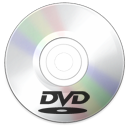 Every computer these days comes with a DVD/CD burner. They are seriously useful devices, especially since blank DVD media is now dirt cheap.
Every computer these days comes with a DVD/CD burner. They are seriously useful devices, especially since blank DVD media is now dirt cheap.
When your burner was new, it probably worked like a charm. As time went by and you tried different brands or types of media, you may have discovered that your drive didn’t burn as well any more. Sometimes it starts burning, but gets stuck in an infinite “blinking LED” loop, and you have to abort the burn and try again. Sometimes your optical disk drive (ODD) won’t read certain burned media.
Many people just assume that their drive is bad, and they buy a new one. After all, when you can pick up a good 22X DVD burner for $20, why not? But there is another even cheaper option that many folks simply don’t know about: you can usually upgrade your drive’s firmware for free!
First, a little word about the different brands of ODD’s that are out there… Not all ODD’s have regular firmware updates. Some computers – especially Macs in my experience – can be very picky about the type of drive you install, and/or they have custom firmware installed at the factory. Sometimes you can successfully flash such drives, and sometimes not.
The first step is to check your machine and see if your computer manufacturer includes ODD firmware updates. For example, if you have a ThinkPad, you might be able to use Lenovo’s update utility to get all the updates you need without having to do the dirty work of determining the manufacturer and model number of your burner.
If you’ve built your machine yourself, or if you don’t have any kinds of “System Update Utility” (Windows Update won’t do it), then here’s what you do in Windows:
- Open Device Manager
- Expand DVD/CD-ROM Drives
- You’ll see something like: TSSTcorp CDDVDW SH-S223F ATA Device. Right click on this device and choose Properties
- Click the Details tab, and in the pull-down, choose “Hardware Ids“. In the Value field, you will see something like this:
IDE\CdRomTSSTcorp_CDDVDW_SH-S223F____________SB02__
The “SB02” is the firmware revision of your drive. Write it down. - Next, if you don’t know who “TSSTcorp” is, do a search on the net for the model number. In this case, the drive is a Samsung.
- Go to the manufacturer’s web site. Find the Support/Drivers/Downloads section. Usually you can type in your model number (SH-S223F in this case), and you will be provided with either a firmware update utility, or some firmware update software to install on your computer that will check for and install any firmware updates for you automatically.
At this point, if there is a firmware update for your ODD, you can download the firmware or update software, unzip/install it, and follow the directions in the included help files.
The Samsung drive in our example gives a download for Samsung’s ODD firmware update software. For other vendors, you’ll just get a ZIP that can usually be decompressed into a binary firmware update file, and a firmware flashing program. Usually, you just run the flash program, and it takes care of the rest. In either case, you’ll need to reboot when the firmware update is finished.
The majority of the time, a new ODD firmware revision will increase compatibility with reading/burning certain types of media, increase burning speed/reliability, and so on.
As I mentioned above, be aware that not all drives are created equal – or rather, not all manufacturers are created equal. Samsung is one company that generally does a great job of releasing regular firmware updates for their ODD’s when there are problems. Other company’s, such as Asus or Pioneer, will generally not do such a great job in keeping up with firmware revisions for their ODD products. Sometimes an “Asus” ODD is really a re-branded Pioneer model. That can mean that Pioneer firmware will work, but sometimes not if Asus replaced the firmware themselves… In other cases, your drive will be a Matsushita (Panasonic), and that’s that.
So, it can be a little tricky sometimes to find a firmware update for your specific ODD, but it can be done with your favorite search engine. In most cases, either the support web page or the firmware update itself will include text describing the changes in the newer firmware revision.
A little sleuthing can get you updated ODD firmware and like-new reading and burning at no cost at all. Worst case, you’ll need to buy a new burner. If you do need a new one, search the manufacturer’s support web site first and make sure that firmware updates are available for their ODD’s. That way, you know you are getting a well-supported product!




Recent Comments